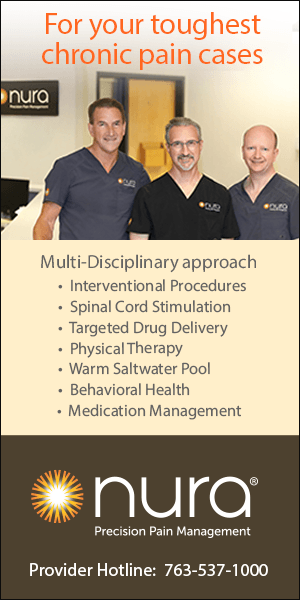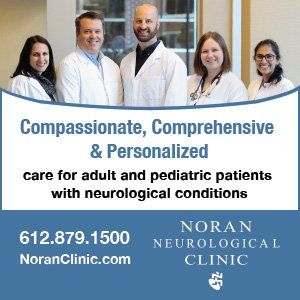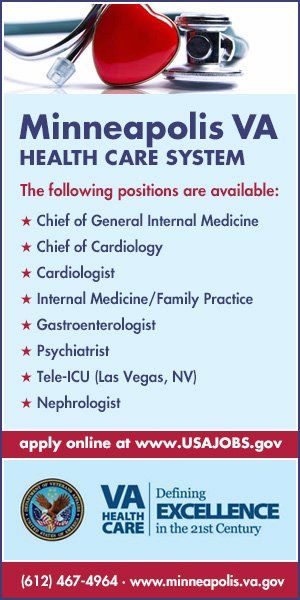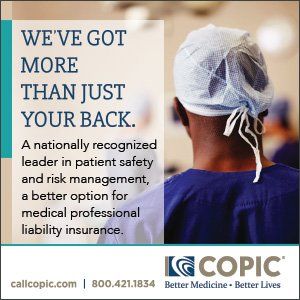ealth care in the United States is incredibly complex and fragmented. Patients are often assessed, treated and monitored by multiple clinicians in multiple facilities which can result in a rushed and complicated episode of care that includes many players and interactions.
cover story two
Care Transitions
Identifying & Reducing Risks
BY ROBERT HANSCOM, JD; MARYANN SMALL, MBA; ANN FIALA, RN, BSN, CPHRM, CHC, CHPC; PATRICIA BENNETT, RN; BARBARA RICCI, BS AIC
Comprehensive Medication Management
Comprehensive medication management (CMM) or medication therapy management (MTM) is a standardized care process performed by pharmacists in a variety of healthcare settings. The American College of Clinical Pharmacy (ACCP) defines CMM as:
A study by Coverys (a medical professional liability insurer) using closed claims data shows that while care transitions—in and of themselves—are not a major primary allegation in malpractice claims, they are more likely to result in indemnity payments and significant patient harm than many other types of events that trigger claims. Because health care often involves care transitions, it stands to reason that many malpractice claims that allege other primary causes (e.g., medication, diagnostic or surgical error) also have a component of risk related to one or more care transitions.
Each time a patient is wheeled from one hospital department to another, is referred from a primary care physician to a specialist, is discharged from the emergency department to their home or is sent from an acute care environment to a nursing home or other post-acute care setting, they are participating in what is known as a “transition in care.” These distinct moments of patient handoff are laden with risk; a notable study found that 80% of serious medical errors are caused by ineffective care transitions.
Care transitions involve situations where:
- Multiple providers and influencers must collaborate, coordinate and communicate fully and effectively on behalf of their shared patient.
- Differing cultures (among hospital departments, between different facilities or practices and between patient and provider) can result in miscommunication with negative consequences.
- Resources can be stretched thin during periods of emergency or high volume and during shift changes.
- Reliance upon electronic medical records can pose complications and increase risk.
- Discharge decisions can be rushed or incomplete.
- The patient’s ability to understand the process and treatment, as well as their functional capability, is vital.
In an era of productivity and profitability, physicians and their support teams are challenged to do more with less time—more procedures, more patients, more billing codes, more diagnostic mysteries to solve and more specialists to consult. These pressures can have patient-safety consequences. Some clear themes related to care transitions that emerged from the data include:
The patient and their family can be crucial to outcomes. Sometimes the strongest predictor of patient outcomes is an accurate assessment of the patient’s functional readiness to care for themselves or convey crucial information to other medical providers. When health care practitioners hand off a patient without fully understanding whether the patient understands their next steps, adverse events are more likely to follow. When discharging patients to home, patients and family members become caregivers, and when discharging to a post-acute care facility, nursing home or other doctor’s office, the patient is often the only single person who traveled the entire medical journey. If the patient and/or their family are not offered the conversations, written discharge instructions and other resources needed for ideal outcomes, even good communication and documentation to other providers might not be enough.
Communication is imperative (and verbal is not enough). As demands on health care providers increase, delivery of care can become rushed. For example, complicated home care instructions are offered verbally to a nodding and anxious patient but are not confirmed via a teach-back or reinforced with detailed written instructions, or prescriptions for expensive medications are written without confirming whether the patient can afford to fill them. It’s not just good communication with patients that matters, as communication happens at multiple levels: provider to patient and provider to provider. One study estimated that 80% of serious medical errors involve miscommunication during the handoff between medical providers. Communication was the third-most frequent risk issue during transition-related events that triggered malpractice claims in the analysis.
Clinical decision-making is the heart of optimal health care delivery.
Fragmented environments are ripe for structured improvement. It has been estimated that at a single academic medical center, more than 4,000 care transitions happen each day. It’s safe to assume that kind of frequency of handoffs is the norm at other types of hospitals and health systems. With patients transferring from medical centers to nursing homes to rehabilitation centers to doctors’ offices to their own homes, the complexity of caring for even a single somewhat-stable condition can be daunting. Implementing a proven care-transition model and being diligent about internal processes, communication, documentation, discharge planning and patient assessment and education are key factors for successful care transitions.
Some patient populations are at higher risk than others. We know from the data that elderly patients, cancer patients, patients who come to the doctor or the hospital unaccompanied and those who have language, health literacy or cultural barriers are at much higher risk during or after a transition in care. Providers and organizations that take this into account and work to identify and assess at-risk patient populations can help level the opportunity for good outcomes. Systematizing the use of social workers and interpreters and having access to language translation services for discharge instructions is also important. Patient-centered care is all about remembering to meet the patient where they are—not simply treating the disease or condition. Systematizing the use of social workers and interpreters and having access to language translation services for discharge instructions is also important. Proactivity and thorough assessment can identify gaps and create opportunities. No two healthcare facilities are exactly alike, but they can all be assessed through common filters to determine areas of vulnerability and opportunity when it comes to care transitions. Taking the time to look at your practices can help identify where improvements are needed. Assessment tools are available through medical professional liability companies, and you can engage consultants to help you improve your culture of accountability, communication and safety when it comes to care transitions. You should also regularly analyze your outcomes data (e.g., readmissions, completed referrals, patient complaints and patient morbidity and mortality statistics).
Standardization and practice contribute to successful outcomes. When communicating with a patient about their condition and their upcoming care transition, and when sharing vital patient information with your medical colleagues and collaborators, doing it “the same way every day” can improve safety and outcomes. Adopt one of several handoff mnemonics to help you ensure a thorough conversation and/or written document, develop meaningful checklists and ensure they are used and consider implementing a proven care-transitions model that has worked well at similar organizations or in service to similar patient populations as yours. Routine and rigor are vitally important because delivering health care is highly complex and full of variability.
Patients may be pressed for time or face challenges in paying for their care. If the care transition plan is not executed in the context of your patient’s reality, it is more likely to result in patient harm. Some questions to consider: Does the patient work full-time while raising children alone and therefore might have to go weeks or months before following up with the primary care doctor or specialist you are referring to? Is a co-pay for an MRI something they can afford or might the promise to pursue additional diagnostics be the patient’s way of maintaining their pride in the face of a medical request they know they can’t fulfill? Is it possible that a discharge to home, while it might be situationally sensitive for a patient who doesn’t have coverage for rehabilitation services, isn’t in the patient’s best interests if they don’t have the functional capacity to manage medications or daily activities?
Unique Issues That Impact Patient Handoffs
Clinical referrals can be difficult. Patient discharge instructions can be difficult. Even transferring a patient from one unit of a hospital to another can be difficult. Much of that difficulty arises because of one or several unique but predictable factors:
- As health care organizations seek to be optimally productive and fiscally responsible, patient loads per provider can be heavy and burdensome. When you don’t have much time to spend with a patient, it can be very difficult to ensure thorough handoffs.
- Effective care transitions require some level of teamwork and rapport among clinicians and their patients, but cultural divides (even differences in how the cardiology department and the emergency department function and speak) can create unintended consequences. In serving their patients, health care providers must often rely on colleagues with whom they have little synergy and perhaps no relationship.
- The EMR has, for better or for worse, come to replace word-of-mouth information and the over-reliance on these records causes many transition-in-care issues, from the assumption that the EMR is complete despite some crucial notes or test results not having been dictated yet, to the common occurrence of a patient having records for the same condition and care journey in multiple EMRs at multiple facilities with no interconnectivity to one another.
- A stable patient can become unstable in a short period of time, and when a handoff takes too long, the entire situation can quickly go from “under control” to perilous.
- Since the advent of the hospitalist model and the ever-increasing trend for many U.S. patients not to have a primary care physician, there is often no single source of relationship or information about a patient’s health. And unless the patient is an incredibly capable communicator, much can slip through the cracks.
The Patient’s Role in Care Transitions
Transition-related events involve a certain degree of patient involvement or a lack of buy-in—cases where a stronger focus on shared decision-making and a shared mental model between provider and patient might have led to better outcomes.
Take, for example, a patient who nods, smiles, or verbally confirms that they understand the prescribed next steps (e.g., referrals, home care) but doesn’t truly understand. Clinicians may not be aware of the patient’s confusion or ensuing decision-making that results in poor outcomes until they hear from their malpractice insurance carrier.
Think also about patients who don’t have a primary care physician (PCP) or haven’t seen their PCP in many years. When you treat a patient and discharge them to a PCP who doesn’t exist or with whom there is no maintained or trusted doctor-patient relationship, the care transition becomes immediately vulnerable.
A patient’s functional status—their ability to walk, their cognitive abilities, and their ability to perform daily activities—are important considerations. Something as simple as relying on a patient to use eye drops or change a bandage can be imperiled by a misunderstanding about what the patient is truly capable of managing on their own.
Patients often fail to make or keep critical follow-up appointments. The Agency for Healthcare Quality and Research (AHRQ) reports that more than one-third of patients with an inpatient status who were discharged from hospitals requiring more care ultimately failed to get that care. Such absent care contributes to hospital readmissions and poor outcomes.
One of the primary measurements of ineffective care transitions is hospital readmission. For events where care started in an inpatient setting, 38% resulted in the patient being readmitted to the hospital, and these cases accounted for 47% of indemnity paid for care transition events. The most frequent readmissions occurred within 30 days.
Improved patient engagement during transitions can help. Medical practices and hospitals that have lower than-average transition-in-care risk are typically those that have systematized phone, text and email follow-up (with patients and receivers alike) to ensure that referrals are completed as advised.
Health care providers rely upon patients to act in their own best interests and often count on families and caregivers to help ensure optimal outcomes. The National Transitions in Care Coalition (NTCC) offers Patient and Family Engagement/Education as one of their seven essential intervention categories. They suggest having families and patients explain the details of their care plan in their own words. The NTCC reminds providers that there are several ways to double check that families are prepared and clear about what to do next and that it’s a provider’s responsibility to educate families and patients through verbal and written means that can improve the health literacy of these stakeholders.
Health care providers and administrators face a daunting daily task.
Monitoring and Medication Management Issues
Managing a patient’s medications is a complex endeavor, even in the absence of multiple care transitions. Coverys analyzed more than 10,000 closed medical malpractice claims in 2017 and found that medication-related issues were the fourth-leading claim allegation. Medication issues were the second-most frequent allegation in care-transition events. Similarly, medication-related events that involved the highest levels of injury severity (including death) were those that involved an alleged failure to properly monitor a patient’s condition during and after a transition. It is understandable how the continuation of or management of medications, as well as the ongoing monitoring of patient vitals, can be difficult during swift, complicated, or disorganized care transitions. These important details can slip through the cracks when one provider assumes another provider is keeping tabs on them.
Diagnostic Issues and Clinical Decision-Making
Before a patient experiences a transition in care, they nearly always receive a diagnosis, even if only preliminarily. So a discussion of care transitions must include a review of the diagnostic process and the degree to which diagnostic accuracy is a precursor to the quality of a patient’s care transitions. In a 2018 review of 10,618 closed claims over a five-year period, Coverys found that diagnostic-related errors were the leading root cause of medical malpractice claims—33% were diagnosis-related, and 47% of indemnity paid over a five-year period was for diagnosis-related claims.
Even when a diagnosis is accurate and timely, arriving at it often triggers the need for one or more care transitions—referrals to specialists, transfer to different hospital units, transition to radiology or other diagnostics or discharge to home or nursing facility. And referral management is complex and full of risk; 9% of all diagnosis-related claims alleged an issue with referral management.
When making a diagnosis and preparing a patient for a transition to another provider or care environment, strong clinical decision-making is key. In the review of 3,466 closed claims with diagnosis-related allegations, 53% were determined to have an issue with clinical decision-making. Thoughtful, big-picture clinical decision-making is vital before, during and after care transitions. Sending a patient to the wrong location, at a premature time, or without proper safety nets in place creates vulnerability to patient harm. In examining the 210 transitions-in-care events that form the basis of the report, two of the largest indemnity payments ($3M and $5M) involved allegations of a failure to diagnose and treat conditions that caused serious injury or death.
Clinical decision-making is the heart of optimal health care delivery. Of the myriad risk issues at play (563 risk factors across 210 patient events), a failure in clinical decision-making accounted for 29% of those risk issues. The most common types of clinical decision-making issues were failure to obtain a full family or personal history, negligent post-operative monitoring and treatment, failure to obtain a specialty consult or referral, inadequate or inappropriate testing, narrow diagnostic focus and failure to rescue.
Technology, Tools, and Best Practices
While the stories and statistics about what can go wrong during patient transitions warrant serious attention and concern, there is also cause for optimism about improving patient outcomes through the implementation of new systems, technologies, tools, models and protocols. Fine-tuning an organization’s care transition practices is inherently difficult because process changes can be difficult to sustain over time, and care transitions are highly human in nature. The good news is that doing something (anything) to bring structure, safety nets and additional thoughtfulness to patient handoffs can and will have a positive impact.
There are several areas you might examine to get started improving care transitions, including:
- Conduct a formal, thorough assessment of your practice or facility as it relates to care-transition processes and behaviors.
- Reconsider the design and utilization of your EMR, knowing that it is a key component of transition-related communications. EMR systems can be prepopulated with clinical referral templates and other helpful tools to ensure good patient outcomes.
- Audit your current discharge protocols and identify ways to improve them.
- Consider ways in which you can categorize patients into different populations based on transition risk. Then provide additional layers of support and safety for those who are most vulnerable to harm during a transition.
- Rethink older technologies that your team could be using more effectively, like telephone, email and your practice’s portal, to ensure timely communication with other providers and patients alike.
- Closely examine the way in which you interact with radiology. When it comes to care transitions, the role of radiology is crucial and in need of attention. While claims involving radiology occur infrequently, they often result in high indemnity payments.
Managing Risk and Improving Patient Safety
This article provides data driven recommendations for reducing risk and improving outcomes related to the transition of patients from one provider or one setting to another. Following is a final list of recommendations that apply broadly to care transitions.
What you save through speed may cost you in patient harm. A great deal of transition-related adverse events involve brief interactions where time pressures can make it difficult for adequate discharge instructions or referral information to be clearly conveyed and patient questions thoroughly addressed. When one appointment or admission is handled sub-optimally, it can require return visits or hospital readmission, ultimately costing patients, providers and hospitals more time in the episode of care and a higher likelihood of poor patient outcomes.
Discharge is not a medical term for goodbye. Discharge or referral should be thought of as a beginning and not an end. Discharge to home, rehab, post-acute care facility, nursing home, or hospice is the beginning of the next phase of the patient’s treatment or healing. Providers who pass a patient along to the next step in a medical journey should be immediately thinking about when and how they will follow up and check in—with other providers, with caregivers, and with the patient.
Functional teams, safer patients. Effective teamwork has long been a focus of surgical departments and other high-risk medical environments. It is equally important that teams of providers—across departments in hospitals and health systems and between providers who refer patients to one another—prioritize ways to improve their interdependent processes and communications to ensure improved patient safety.
Collaboration and community at the core. Excellent patient care involves a “we” mindset from providers and caregivers, who should always be thinking about “our patient” and “what we can do to support them,” rather than the default mindset of “that other provider has taken over at this point.” True collaboration keeps the patient as the core focus at every step and in the mind of every provider.
Documentation is not paperwork but an extension of care. Imagine what the U.S. healthcare experience would look like if providers thought about transition documentation as the book version of the movie— the whole story, just in written form. If you value the readers and decision-makers who reference the EMR and other handoff or discharge documentation as customers who need the whole story, how might patient outcomes be improved for the better?
A balance of listening, speaking and written instructions is needed. For a provider to insist that “I’m more of a talker than a writer” or “I answered all the patient’s questions, so I didn’t think it necessary to outline a full transition plan” or “They were given written instructions—that’s all they should need” is simply not adequate. Ensuring clarity in communication requires a thoughtful balance of listening, speaking and written instructions.
Mindset matters. Perhaps the most common phrase heard during a hospital morbidity and mortality review or during a deposition or trial in the wake of a malpractice lawsuit is “I didn’t think that” or “I assumed that.” Our perspectives, frames of reference, assumptions and mindsets matter when it comes to patient care—sometimes to a life-and-death degree.
Stitching together a fragmented health care environment begins with you. Health care providers and administrators face a daunting daily task—serving patients optimally in a system that often fails when it comes to interoperability. So while it’s true that broader ecosystems are sometimes at fault for individual cases of patient harm, the stitching together of process gaps, dysfunctional teams, or siloed systems happens one provider and one leader at a time. It begins with you.
Conclusion
Every day in the United States, millions of care transitions take place for patients in hospital, out-patient and continuing-care settings, most without major incidents but all with inherent risk for poor outcomes. In this article, we have identified key factors that can contribute to poor care transitions and ways to mitigate these factors. We also recognize that relationship building, partnerships, and effective communication belong to all stakeholders—health care professionals, patients and families, as well as communities.
Robert Hanscom, JD, Vice President of Risk Management & Analytics.
Maryann Small, MBA, Senior Director, Risk Analytics.
Ann Fiala, RN, Senior Risk Specialist.
Patricia Bennett, RN, CPC, Senior Manager, Clinical Coding
Barbara Ricci, BS, AIC, Senior Analyst.
MORE STORIES IN THIS ISSUE
















